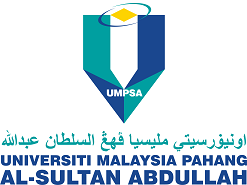TAHAP KESEDIAAN PELAJAR DIPLOMA DALAM MENGIMPLIMENTASIKAN KAEDAH E-PEMBELAJARAN DI POLITEKNIK MALAYSIA
Readiness Level of Diploma Students in Implementing E-learning at Malaysian Polytechnics
DOI:
https://doi.org/10.15282/ijhtc.v6i(S1).6230Keywords:
E-learning, Attitude, Literacy, Facility, AccessAbstract
The implementation of e-learning has been executed in institutions of higher learning (IPT) including Polytechnic Malaysia. Student readiness for this method is an indicator of success or failure in this learning method. This readiness factor has many aspects to consider. Therefore, this study is conducted to identify the level of readiness of polytechnic diploma students in the aspects of computer user attitude, computer literacy, facilities and access to technology. This study used a quantitative approaches to data collection. A total of 398 respondents were selected by combination techniques between multiple layers and groups. Instrument questionnaire was developed and modified for the purpose of obtaining data of the study. The findings on the level of e-learning readiness of computer user attitude factors were high with a mean value of 4.09. For computer literacy factor, it is in a simple stage with mean value of 3.57. The findings also showed that the level of e-learning readiness of the computer facilities factor was moderate with a mean value of 3.56. While the level of readiness through technology access factor is high with a mean value of 3.70. Overall, the level of e-learning based on all factors is at a high level with a mean value of 3.75. It is hoped that this study will provide a clear explanation on the level of readiness of polytechnic students on e-learning methods so that appropriate actions can be implemented in line with the government's efforts in empowering global online learning.
Pelaksanaan e-pembelajaran telah dimplimentasikan di institusi pengajian tinggi (IPT) termasuk Politeknik Malaysia. Kesediaan pelajar terhadap e-pembelajaran merupakan indikator kepada kejayaan atau kegagalan kaedah ini. Faktor kesediaan ini pula mempunyai pelbagai aspek yang perlu dipertimbangkan. Justeru itu, kajian ini dijalankan bagi mengenalpasti tahap kesediaan pelajar diploma politeknik dari aspek sikap kepenggunaan, literasi komputer, fasiliti dan akses teknologi. Kajian ini menggunakan pendekatan kuantitatif. Seramai 398 responden yang dipilih secara teknik gabungan antara rawak berlapis dan berkelompok. Instrumen soal selidik dibangunkan dan diubahsuai bagi tujuan mendapatkan data kajian. Dapatan kajian mengenai tahap kesediaan e-pembelajaran dari faktor sikap kepenggunaan komputer adalah tinggi dengan nilai min 4.09. Bagi faktor literasi komputer pula adalah pada tahap sederhana dengan nilai min 3.57. Dapatan kajian juga menunjukkan tahap kesediaan e-pembelajaran dari faktor fasiliti komputer adalah sederhana dengan nilai min 3.56. Manakala tahap kesediaan melalui faktor akses teknologi pula adalah tinggi dengan nilai min 3.70. Keseluruhannya, tahap e-pembelajaran berdasarkan semua faktor ada adalah pada tahap yang tinggi dengan nilai min 3.75. Diharapkan kajian ini akan dapat memberikan penerangan yang jelas tentang tahap kesediaan pelajar politeknik terhadap kaedah epembelajaran agar tindakan yang sewajarnya dapat dilaksanakan sesuai dengan usaha kerajaan dalam memperkasakan pembelajaran dalam talian tahap global
Downloads
Published
Versions
- 2021-03-08 (2)
- 2021-03-08 (1)
Issue
Section
License
Copyright (c) 2021 Universiti Malaysia Pahang Publishing

This work is licensed under a Creative Commons Attribution-NonCommercial 4.0 International License.




